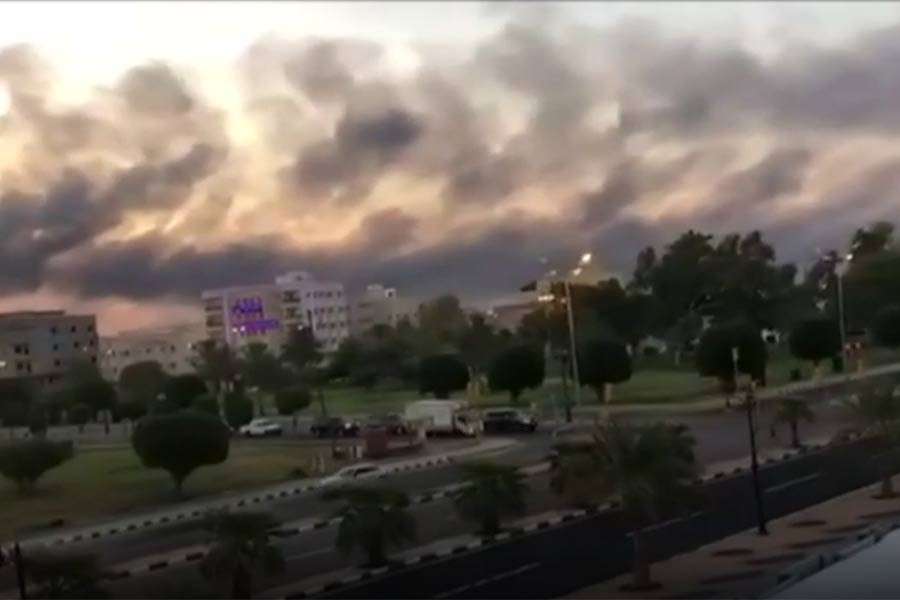
Published :
Updated :

Saudi Arabia's state-owned company Aramco is the world's biggest oil producer, generating 10 per cent of the world's oil, but it is also one of the world's most profitable businesses.
For a drone attack to have knocked half of its - and 5 per cent of the world's - oil supply offline, speaks to the vulnerability of their plants and in turn to the vulnerability of a vital part of the global energy infrastructure.
The Khurais oilfield produces about 1 per cent of the world's oil, and Abqaiq is the company's largest facility - with the capacity to process 7 per cent of the global supply.
Questions being asked centre on why this attack could not have been prevented by a company with such deep pockets and whether it can happen again.
Market reaction
A barrel of crude oil cost $60 (£48) on Friday and some analysts believe that could spike up to $80 (£64) or more - a knee-jerk response from traders to the shock attacks and to the many unknowns still surrounding the scale of the damage.
Even if this were to happen, prices at the petrol pump wouldn't be guaranteed to rise by the same rate, however.
When oil trading starts in Asia later on Monday (00:00 GMT), we'll get our first indication of how markets have digested the scale of the damage and how prices have been affected. Almost three quarters of Aramco's oil goes to Asia.
Previous events of a similar nature in recent times, however, have not had a long-term effect on the oil price.
As international energy policy expert Professor Nick Butler explains, "the direct impact of the attacks could be short-lived. The market has adjusted without blinking over the last two years to the loss for political reasons of over two millions barrels a day of production from Venezuela and Iran".
Regional risk
The worry is, if the attacks stoke broader tensions in the region, then these price rises could be more long-term.
Professor Butler believes "if retaliation becomes a reality, any spike could be sustained feeding the risk of an economic recession".
For Helima Croft, global head of commodity strategy at the Royal Bank of Canada, these drone attacks are "a game changer in the escalating Iranian regional stand-off".
Production facilities, trading routes and pipelines which thread through the region could all be vulnerable to future attacks.
Consumer impact
It is far too early to tell whether consumers will see any financial impact from a rising oil price.
In the short term, much depends on how long a spike lasts - and any rise would take weeks to feed through into petrol prices.
For now, investors are closely watching for more statements from Aramco and for any political reaction to events.
In the UK, 40 per cent of the price of a litre of petrol is made up of oil, fuel production and profit. The rest is tax. Analysts say they do not expect to see a significant rise in prices at the pumps for drivers.
"There are currently savings in the wholesale price that have only just started to be passed on to drivers by retailers," says industry expert Simon Williams from automotive services company RAC Limited.
"Many retailers cut their prices by three pence on Friday and we believe that average prices were six pence too high before that, so the impact of these fires may not be too great."


 For all latest news, follow The Financial Express Google News channel.
For all latest news, follow The Financial Express Google News channel.